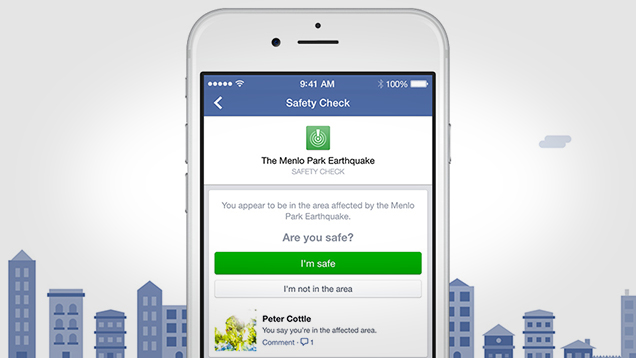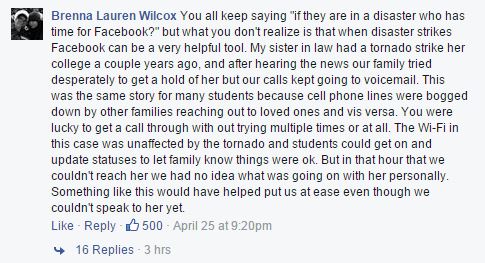Since its inception, social media wove itself into popular culture today, causing organizations to engage with key stakeholders through various social media platforms. Social media platforms such as Facebook, Instagram, Twitter and YouTube collectively attract about 2.8 billion users each month (Facebook, 2014; Instagram, 2014; Twitter, 2014;YouTube, 2014). Since the number of internet and social media users exceeds two billion (Internet World Stats, 2014) internet users, organizations and communication professionals cannot ignore social media platforms as a way to communicate, even during a crisis.
Facebook launched Safety Check on October 15, 2014. Safety Check is a Facebook tool that allows users within an area of disaster to send an update about their safety status directly to Facebook. Users who enable the geotagging feature will receive a notification from Facebook if there is a disaster reported nearby. Facebook users have the option to confirm their status and send their updates directly to their network of friends. Facebook developed this tool after the earthquake in Japan in 2011 (Facebook, 2014).
Social media also enables those affected by a crisis to communicate with others in different parts of the world. For example, during the 2011 flood crisis in Thailand, members of different communities raised awareness about the needs of flood victims. Volunteers were able to band together in effort to provide support to those in need. As the Asia New Monitor (2011) reported, different publics used Twitter to locate where volunteers were needed for disaster relief activities. Social media campaigns can also be used to generate donations for disaster relief efforts. After the 2010 earthquake disaster in Haiti, Facebook and Twitter users posted status updates and retweets to support the American Red Cross campaign to text “Haiti” to 90999 to donate 10 dollars to the Haiti relief fund (Morgan, 2010).
A study conducted by Howell and Taylor (2011) found that 87 percent of participants said they would use social media during a crisis to confirm the safety of their friends and family members. You might be asking who has time to use social media during a crisis, take a look at one Facebook user’s response below.
References
Facebook. (2014). Facebook Newsroom. Retrieved from http://newsroom.fb.com/company-info/
Howell, G. J., & Taylor, M. (2011). When a crisis happens, who turns to facebook and why. Asia Pacific Public Relations Journal, 12, 1-8.
Instagram. (2014). Instagram Stats. Retrieved from http://instagram.com/press/
Internet World Stats. (2014). Internet World Usage. Retrieved from http://internetworldstats.com/stats.htm
Morgan, J. (2010, January 15). Twitter and Facebook users respond to Haiti Crisis. BBC News. Retrieved from http://news.bbc.co.uk/2/hi/americas/8460791.stm
Thailand: Social media put to good use during flood crisis [Electronic Version]. (2011, December 1). Asia News Monitor. Retrieved from ProQuest Database.
Twitter (2014). Twitter Usage. Retrieved from https://about.twitter.com/company




2 Responses to Social Media Use During a Crisis